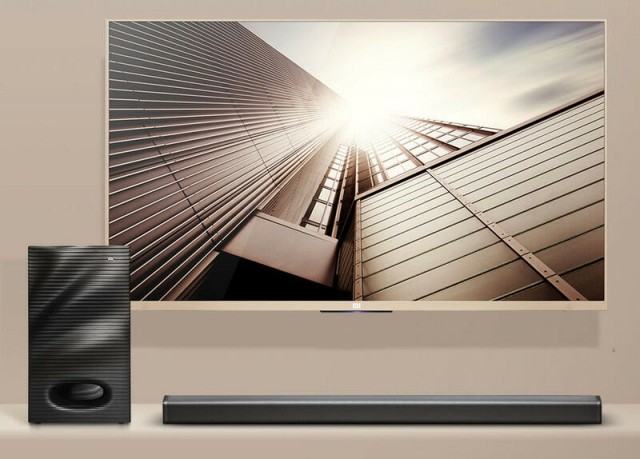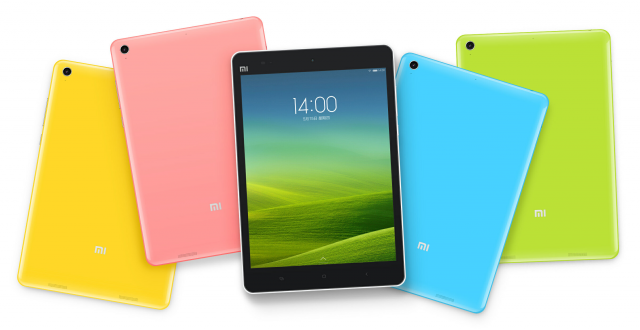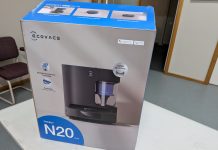
Xiaomi is currently running an event in Beijing and they’ve just announced some interesting products, the first being a 49″ 4K TV, which runs Android called the Mi TV 2 and secondly, a new iPad Mini Clone called the MiPad which is running the NVidia K1 CPU, that was launched at CES back in January.
Mi TV 2

Hot on the heels of the Android running Hisense Vision TVs, which launched here in Australia this month, Xiaomi is also looking to capitalise on Androids popularity, launching a 4K TV running Android. The Mi TV 2 is priced at CN¥3,999 (approximately AUD$685) and deilvers a 3D capable 4K TV, but reports are that it will likely only be available in China.
The TV contains some decent hardware to power the Android component of the TV, offering a 1.45GHz Mediatek processor with 2GB of RAM, 8GB of storage (with microSD Card up to 64GB) and running a customised TV focused MiUI Android ROM developed by Xiaomi. The TV will be controlled by a BLE controlled remote control, adding to frustration if you ever try to replace your remotes with an IR based universal remote.
The thin bezel and thin panel has a seperate sound system consisting of a seperate sound bar with a subwoofer to deliver the bass. It looks nice but it will remain something that will most likely never reach our shores, but, we’ll be keeping an eye on it.
MiPad

On to something that may actually be shipped to Australia quite easily, although will probably never actually go on-sale is the iPad Mini looking Xiaomi MiPad. With a fresh look, the MiPad will be offered in a variety of bright colours including, pink, blue, yellow, green and white, but as well as looking pretty, the MiPad is also powered by the NVidia super chip announced at CES in January – the K1.
The K1 offers a Quad-Core 2.2 GHz Cortex A15 CPU, with 192 CUDA core GPU included to really wow on anything grapchically intensive. The K1 is being pushed by NVidia as the first mobile SoC to be able to provide PC-level graphics from the Kepler Architecture. Like their previous Tegra processors, the K1 also includes a fifth low-power processor for backing up main CPU, but it’s also a Cortex A15 core as well.
With the 7.9″ 2048×1536, 4:3 aspect ratio you’d be forgiven for thinking you’re looking at an iPad mini clone. But it seems that the Chinese manufacturer is unapologetic about this design stance, they even use the term ‘Retina display’ on their website and describe the colours as ‘Millet Apple iPhone 5C tablet using the same cover technology’. But, good luck to Apple getting legal proceedings going in China.
Memory wise, there’s 2GB of RAM to help that K1 processor and there will be two storage options – a 16GB version priced at CN¥1,499 (approximately AUD$257) or a 64GB option priced at CN¥1,699 (approximately AUD$291), but fear not, a microSD Card slot is present to expand that.
The tablet will include a 5MP rear camera and with a 6,700mAh batter, you’ll be quite happily running movies and more for quite a few hours. The package weighs in at a mere 360grams and include Bluetooth 4.0 and Wifi 802.11 AC.
Software wise, the tablet will of course use the Xiaomi Miui ROM, which includes an array of apps including WPS Office, Kingsoft disk, Dropbox and WiFi File Transfer.
It’s an interesting tablet, I’m not sold on the 4:3 aspect ratio, but we’ll see how it goes. The tablet should be shipping in June to Chinese customers, but no mention of international availability has been made – time to head to China if you want one of these bad boys. Check out the introduction video for the Xiaomi MiPad and see what you think:




Maybe the tablet fits in iPad mini cases…?! 🙂
BLE remote for the TV, as the sole remote control method, is just so wrong.
They really should have included IR control of the TV.
The tablets look interesting. I love the colours of the back panels. But not the rear facing speakers.